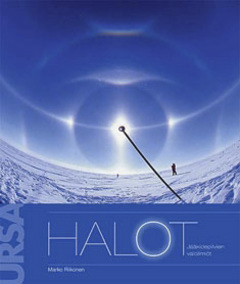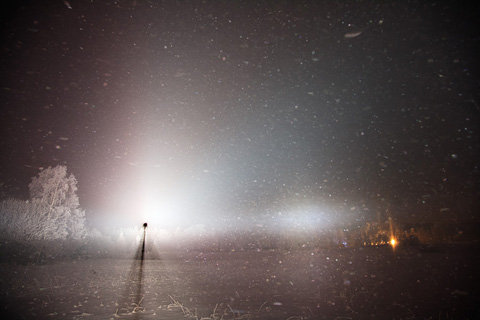
The Finnish Astronomical Association URSA has just published a new book on halos by Marko Riikonen. This book combines the latest halo science with stunning images from all around the world.
Spanning 168 pages, the book presents, illustrates and analyses all the known (and the less well known!) halo forms in great detail. In addition, the newly made discoveries and methodologies concerning spotlight displays are discussed in depth. Many historical displays are also included as a reference. Particular care has been put into preparing the beautiful computer simulations that are used to explain the ice crystal populations behind each display.
The variety of the images is striking and Riikonen has obviously spent a lot of time in finding great examples. Luckily the quality of printing matches these images: I have rarely, if ever, seen a print job this good. Even the faintest halos can be distinguisted in the images.
As Riikonen is a long-time expert in the field, the substance of the book is solid and provides everybody from beginners to experts with new insights about halo science. Being such a significant contribution to the field of atmospheric optics one can but hope for a quick release of an English language edition.
A few select pages can be previewed online (1). Publisher information (2).
Riikonen, Marko (2011) Halot. Jääkidepilvien valoilmiöt. [Halos. The optical phenomena of ice crystal clouds]. Tähtitieteellinen yhdistys URSA ry, Helsinki.

